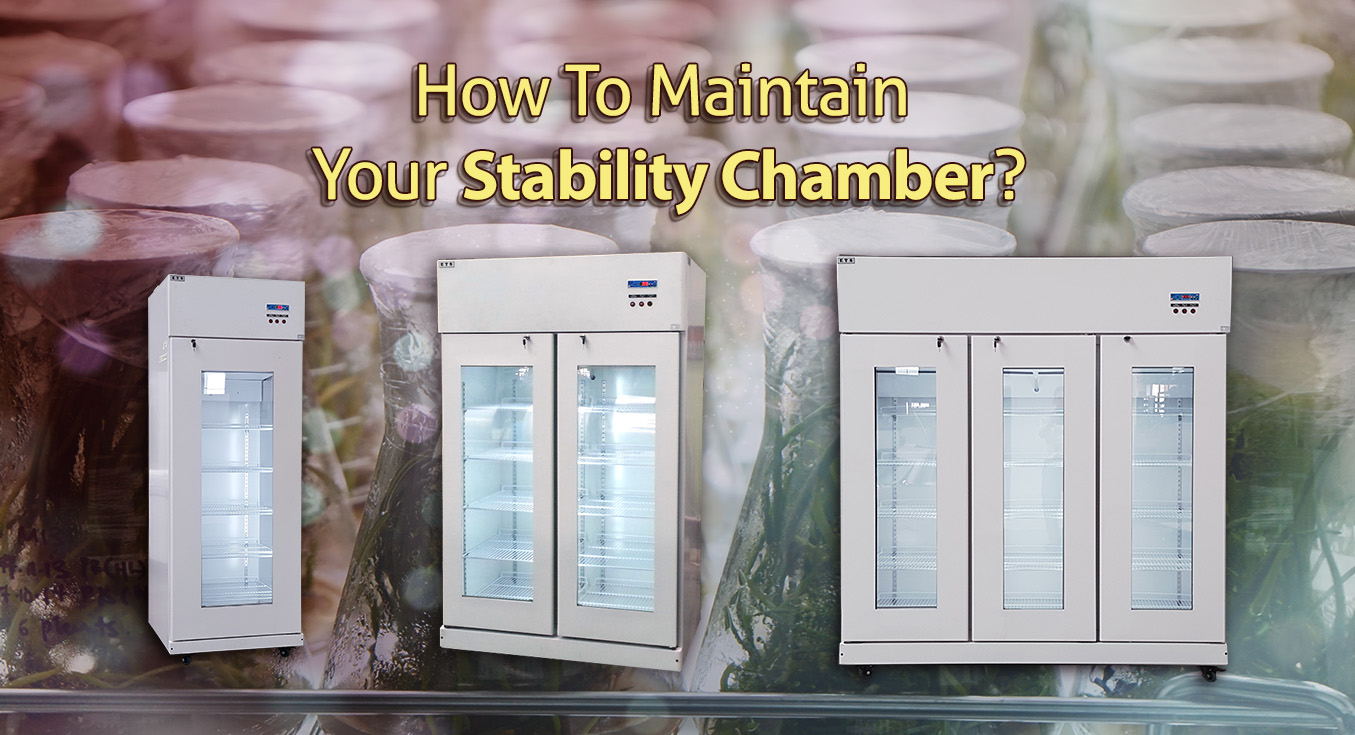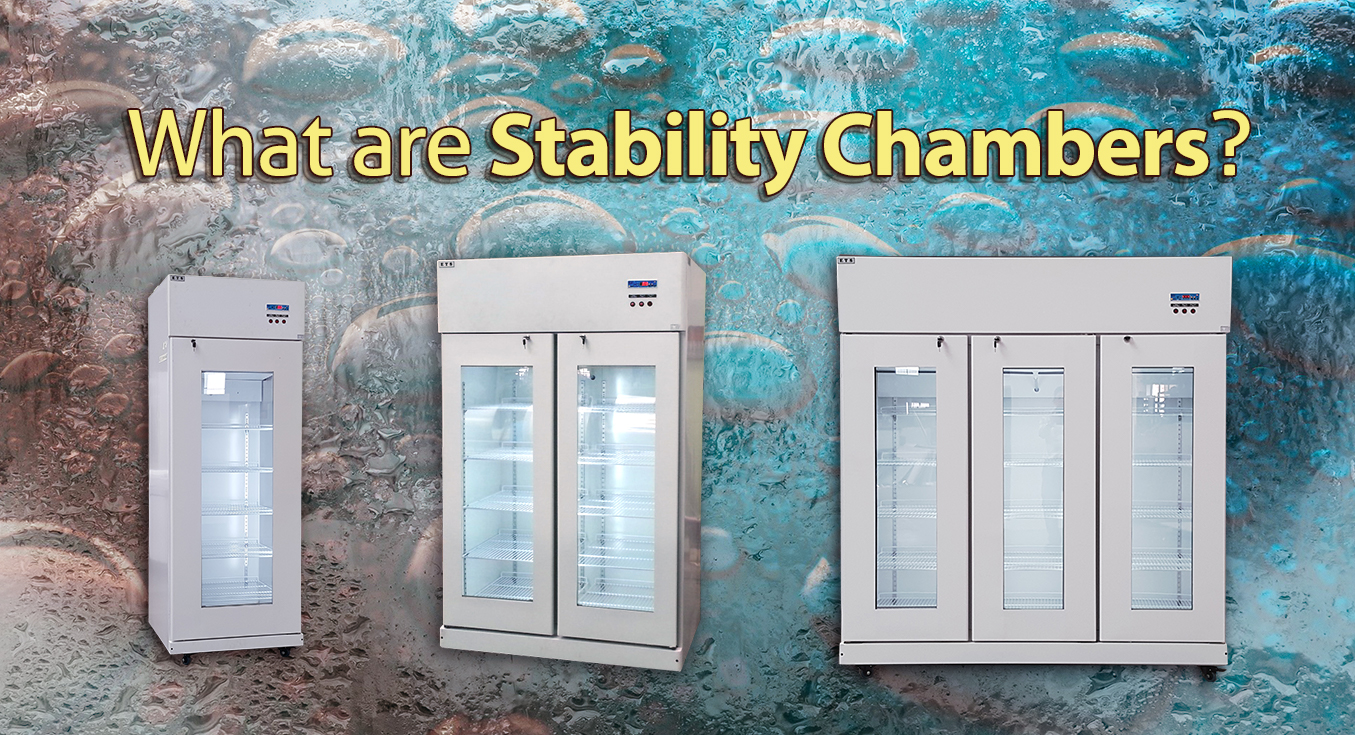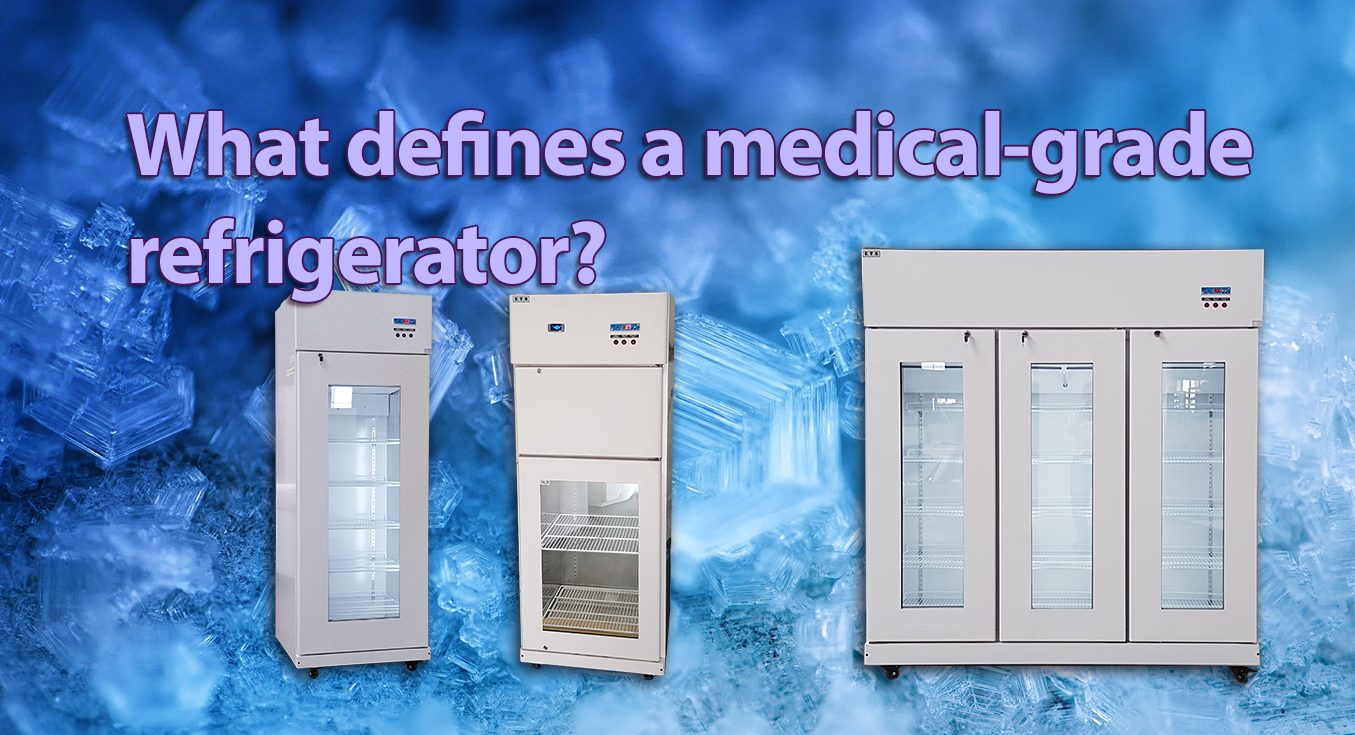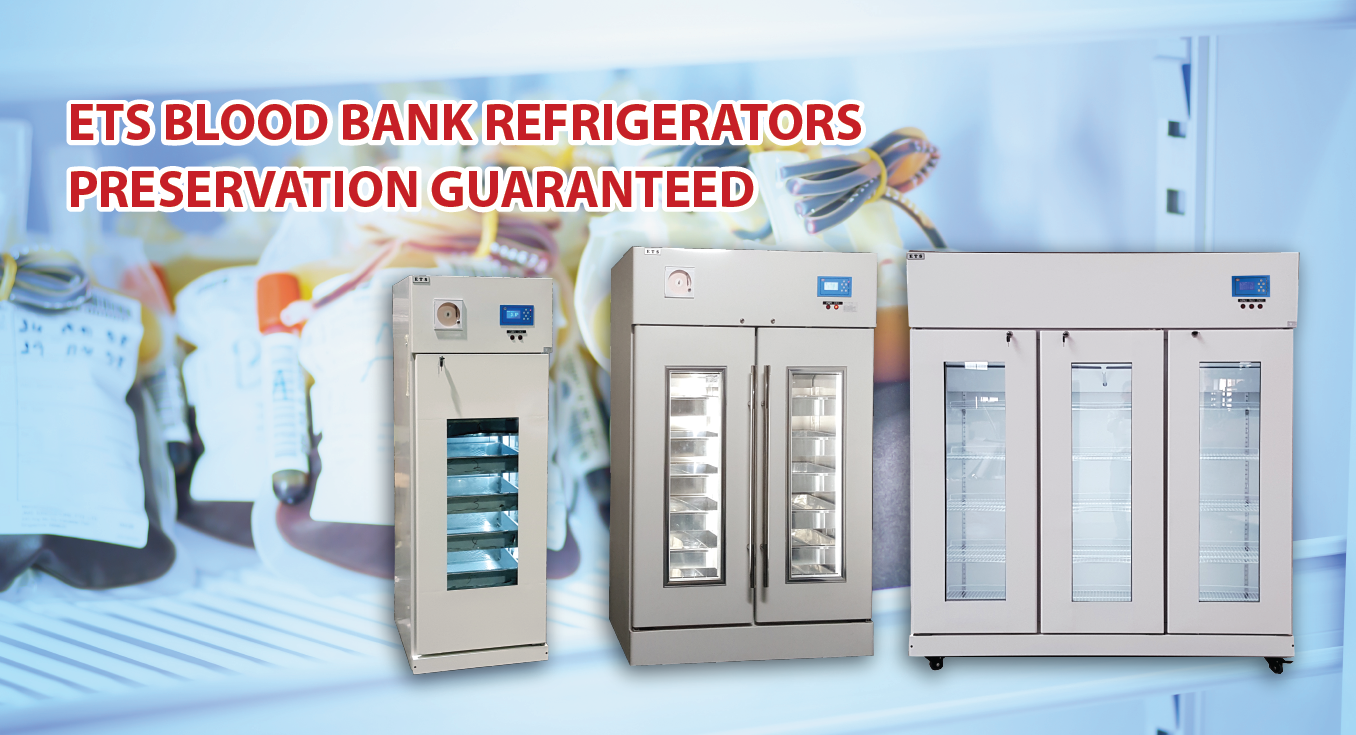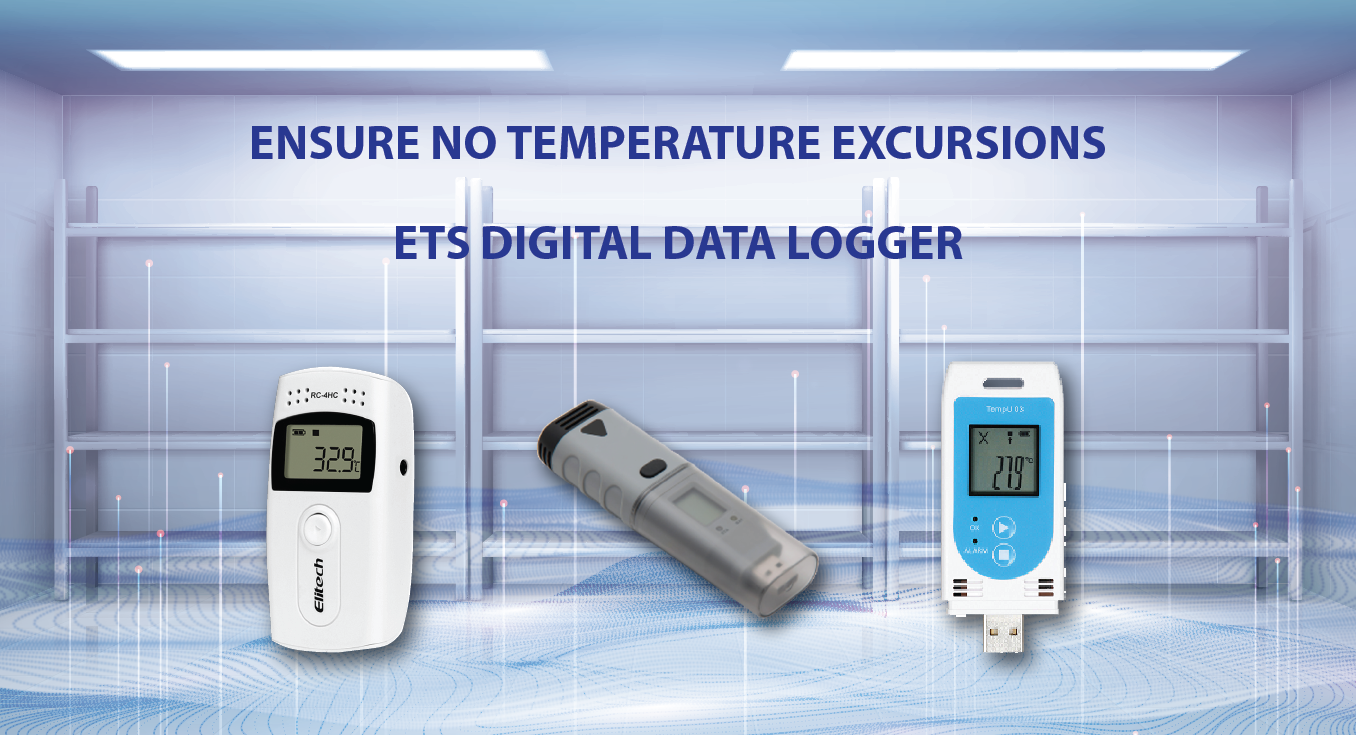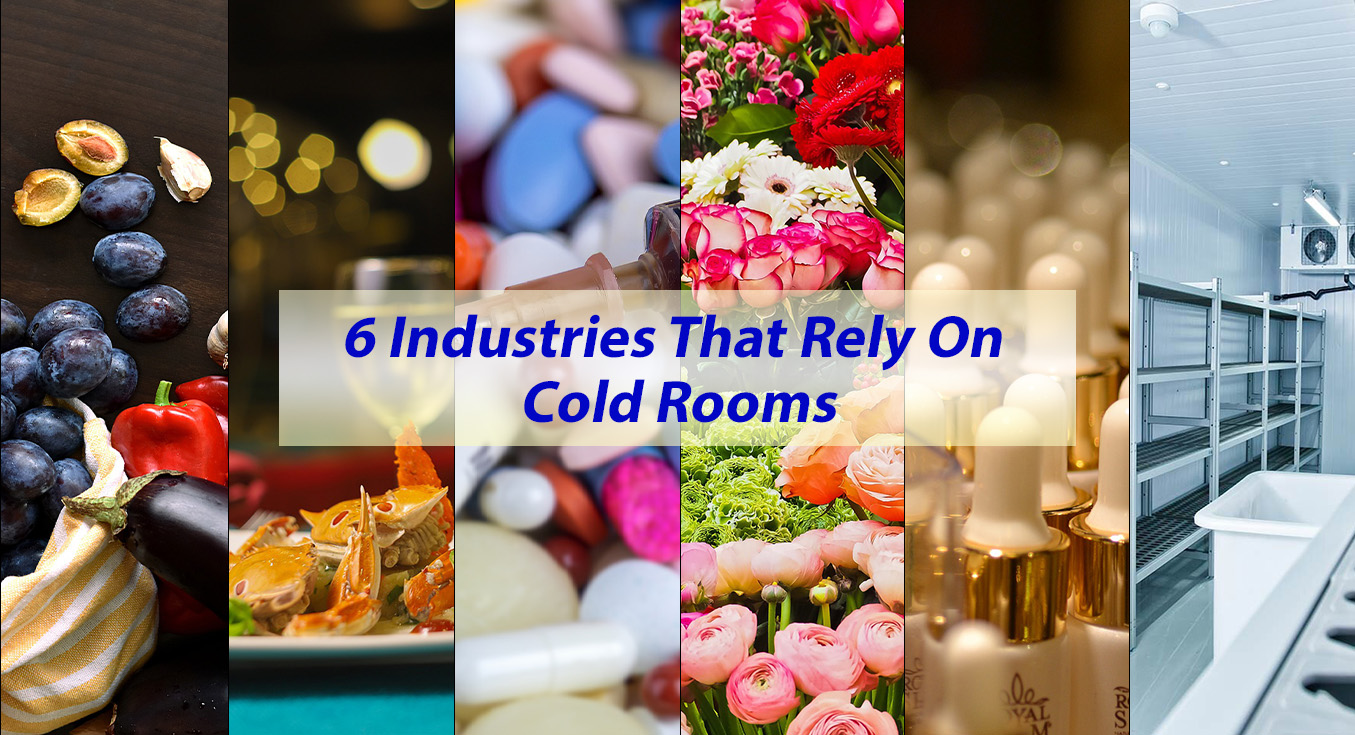Stability testing is an integral part of the product manufacturing processes, which ensures that the final product is working properly, and is of superior quality and longevity.
Stability testing provides valuable data to the manufacturer for improvement of their products such as drugs, electrical components, industrial materials and more, and guidance towards adjusting the products already on the market. However, this process may take weeks, months or even years to complete, according to the product’s requirement.
In order to address the requirements of stability testing, stability chambers or incubators were designed to replicate the temperature and humidity parameters needed for thorough checks on product shelf life versus variable conditions.
Therefore, keeping a stability chamber or incubator in optimum working condition is of utmost importance. To know more about what these equipment can do, check out our earlier post on stability chambers.
To maintain your stability chamber and ensure a long lifespan, here are several best practices for your reference:
1. Proper Unit Placement
Placing your new stability chamber or incubator properly upon installation can ensure that it runs efficiently and with minimal exposure to possible contaminants. Ideally, it should be placed in a temperature-controlled environment with cleanroom conditions. Here are some additional tips before deciding to place your stability chamber:
- Doorways and vents can blow in contaminants and increase chances of fungal growth. Drafts from both can also affect the temperature stability of your unit.
- Direct sunlight on the unit can cause temperature fluctuations and affect anti-condensation functions of the unit.
- There must be at least three inches of space around the unit for venting heat and allow cords and sockets to remain easily accessible.
- Placing the unit on a stand reduces the chances of contaminant exposure when the door is opened.
- Ensure the area around the unit is clean and dry in order to avoid fungal growth.
- The unit should be placed away from sources of vibration such as shakers, stirrers, or refrigerators as vibrations can affect the items placed inside the stability chamber.
2. Monitor Temperature
Stability chambers are set to certain temperatures for the testing of products like live cell cultures, drugs, electrical components and more. When the stability chamber faces temperature fluctuations, this could cause electrical components to fail, or cause drugs and live cell cultures to be destroyed.
It is a standard feature to have a temperature sensor in a stability chamber to ensure temperatures are maintained stably. but how would you know that it is working correctly? In order to ensure that the temperature is recorded correctly, it is advisable to have a second thermometer.
A calibrated thermometer can be installed on the inside of the glass door of the stability chamber which allows it to be read from outside without needing to open the door. Compare this to the data from the temperature sensor and if they differ, then it is highly possible that the sensor would need to be recalibrated.
Another best practice is to avoid unnecessary opening of the unit’s doors. Not only does this prevent temperature fluctuations but also avoids the risk of contamination. You may also opt for a stability chamber with a door lock if it’s required.
3. Monitor Humidity And CO2
Some products like cell cultures may require specific humidity and CO2 levels to keep optimal growth conditions. Others like tissues and cells would be sensitive to fluctuations in these parameters so close monitoring is required.
To maintain an ideal humidity for the stability chamber, make sure that the water tray under the unit is never at risk of running dry.
For stability chambers that focus on environmental testing, monitoring of the CO2 level is crucial. CO2 sensors help you in determining when and how much CO2 is required to be added to the chamber. An external gas analyzer can help you check the levels of CO2 in the unit every few months.
4. Regular Cleaning
If the stability chamber is contaminated, it will have an adverse impact on the results. Therefore, it is of utmost importance to follow a strict cleaning schedule for your unit. Some of the best practices include:
- Wearing gloves when handling containers to be placed inside the stability chamber.
- Change the water in the humidity pan at least once per week.
- Clean all removable parts such as shelves and racking from the unit regularly. Disinfect or sterilize the equipment as needed and ensure that the disinfectants used would not harm the products inside the unit or corrode the unit.
- Clean the outside of the unit, including all door handles and frequently touched surfaces.
- Clean the fan and fan wheels every few months.
- Some stability chambers may include HEPA filters, which can trap fine particulate matter from incoming air to reduce the risk of chamber contamination. These filters require replacing every six months to one year.
- Fully empty and clean the unit at least every 6-8 weeks, making sure to clean any corners or crevices where dirt and germs can collect.
5. Timely Maintenance
Whilst good daily housekeeping can reduce the level of maintenance needed for a stability chamber, ongoing care is still required. Create a list of tasks that need to completed for the maintenance of the unit and split those responsibilities amongst the team in charge of the unit so that the burden is shared equally.
For instance, things like HEPA filters need to be replaced every 6-12 months. Additionally, cleaning the gas inlet filters also need to be replaced along the same timelines and require quarterly calibration.
6. Regular Temperature Calibration
One of the most important items for maintaining a stability chamber is the thermometer. Thermometers need to be validated and calibrated regularly, at least once a month. If there is a need for recalibration after validation, it should be done soonest possible. Events such as power outages and spill cleanups may also require thermometer calibration.
In order to reproduce results, calibration should be done at usual operating temperatures. Stability chambers or incubators used in important or sensitive experiments, should undergo calibration by an external agency annually.
7. Request Professional Assistance
Aside from regular maintenance, your stability chamber or incubator should also be serviced by an authorised engineer from the manufacturer at least once a year to help keep it in tiptop condition.
Some suppliers may offer you flexible service plans that include checks on sensors and working parts, replacement filter parts and other necessities. Decide on your level of daily maintenance according to your needs.
Conclusion
Stability chambers require regular cleaning and maintenance to keep them working at optimum conditions. However, while completing this maintenance can seem like a chore, simple steps such as careful incubator positioning and good everyday working practices can help ease these demands.
ETS STABILITY CHAMBERS
Our Stabilty Chambers are designed to keep drugs, cells, plants, tissue, fungal cultures and other samples which require accurate temperature control and consistent uniformity. They incorporate an optimised evaporation and condensation system, with strong cooling and low energy consumption along with standard temperature control and alarm monitoring features.
Contact us for a quote or to answer any questions you may have.

